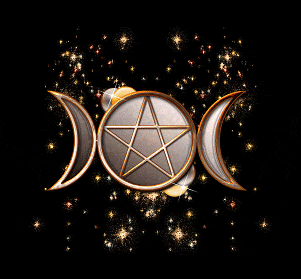Shiny, bright, round, invisible, she’s been an object of
superstition and folklore through the ages. Whether in Africa, Asia, the Americas, or Europe, the moon has been revered, worshipped, and watched. She has been blamed
for disasters, moodiness, and lunacy too. She is seen as representing the
Goddess, the feminine, our emotions, change, reincarnation, the hidden, and many things of mystery.
All these beliefs were formed before science discovered that the moon actually affects
bodies of water. Earthly bodies, whether human, animal, or plant, are made up
of huge percentages of water and it’s logical that the moon affects all
life on earth.
Farming magazines still have pages dedicated to the moon and
its phases. Those of us who enjoy our herb and veggie plots often browse the internet
to check when the best times are for weeding, planting, harvesting, and transplanting.
Personally, I have always been fascinated by the moon, and
often have conversations with her. She is my constant, always there, even when
I cannot see her.
February has been a particularly interesting month with the
new moon, Lammas, and the Chinese New Year all falling on the 1st of
the month. The Chinese New Year is also called the Lunar New Year because the date is determined by the new moon.
Apparently, it means new beginnings and is auspicious in terms of the pandemic winding down. It’s also a period of fast-paced forward movement that needs to be tempered to prevent egos and taking on authority rashly. It’s a year of being socially conscious and family-oriented, but also of separation and drastic change.
Outside of Asia, the Lunar new year is probably celebrated most in the USA and is recognized as an important holiday. Chinese communities here at home celebrate on a much smaller scale and unless you look out for it specifically, you may miss it altogether.
Let’s take a look at what happened 60 years ago. It was the
year that:
- - Telstar had the first live trans-Atlantic television signal
- - The Beatles released their first single “Love me do”
- - The polio oral vaccine was released
- - The first American orbited the earth
- - “Dr. No”, “Spartacus” and “El Cid” were movie hits
- - France transferred sovereignty to Algeria
- - Cuban missile crisis began
- - Burundi, Jamaica, Uganda became independent
- - Robben Island was made a political prison
- - Apartheid was condemned by the United Nations
- - Nelson Mandela was arrested
- - Marilyn Monroe was found dead
Looking back, it seems that there were some major political events,
and that previous work put in such as the polio vaccine and the orbit
around the earth bore fruit. It will be interesting to see if there are
similarities this year.
Today is also a Full Moon.
I wanted to find out if there is a South African name for “our
moon” as we're in summer and the names generally given online relate to the Northern
Hemisphere and therefore winter. What was interesting is that I found out a lot
more.
Depending on where you are, and what you believe, there are various
names and I’d imagine different properties. Some are interchangeable:
Northern hemisphere and Native American - Snow
or Hunger Moon
Southern hemisphere - Sturgeon Moon
Pagan - Corn Moon
Shamanic and Native American - Starving or Hunger Moon
Celtic - Moon of Ice
Neo-pagan - Snow Moon
South Africa - Dassie or Grain Moon
It makes sense that it would be the Grain Moon as this falls
between Lammas and Mabon which are celebrations of the harvest.
The dassie; a rock hyrax, is a totally unique animal being the closest living relative to the African elephant, the dugong, and the manatee. It’s
also the only mammal to have an organ only found in birds. The dassie and all
its abovementioned relatives are gentle, resourceful, and beautiful, and each
can be fierce when challenged.
Whether you celebrate the moon or not, take a look at her
this evening and revel in her light.
Feel the energy.
Photo by GEORGE DESIPRIS from Pexels




No comments:
Post a Comment
Note: Only a member of this blog may post a comment.